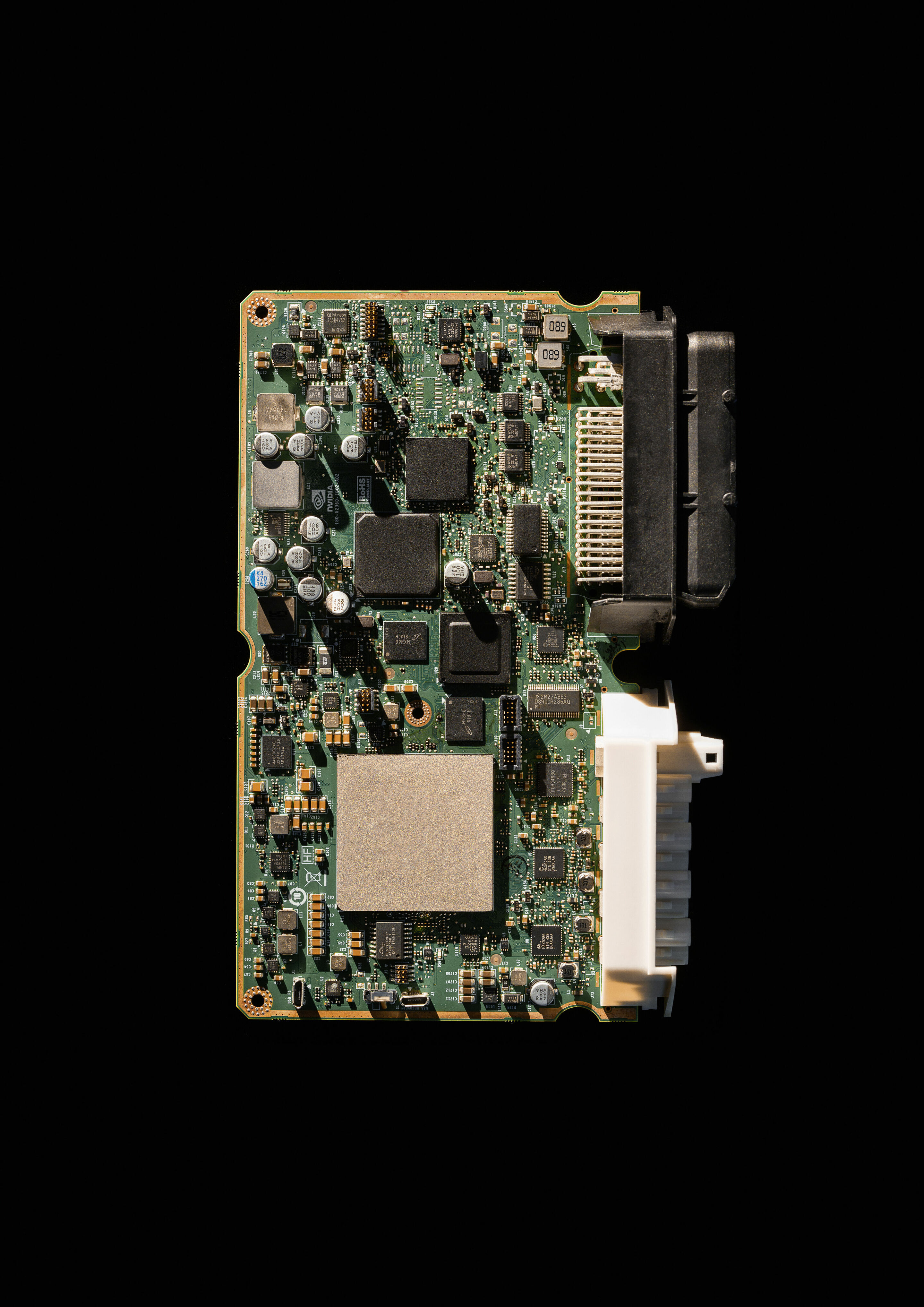Search
All results
(701)
MediaInfos
(184)
Biographies
(2)
Images
(14)
Videos
(7)
Publications
(22)
Technical Details
(238)
 MHEV plus: the next generation of hybridization at Audi
MHEV plus: the next generation of hybridization at Audi
The PTG, which can be fully coupled or decoupled, features integrated power electronics and an electric motor that enables partially electric driving. This reduces consumption and makes for an even smoother driving experience.
“With the new MHEV plus technology, we are driving forward electrification in our new combustion-engine vehicles based on the Premium Platform Combustion that is tailored to the needs of our customers,” says Geoffrey Bouquot, Member of the Board of Management for Technical Development at AUDI AG. “This will strengthen our product portfolio of all-electric models, plug-in hybrids, and vehicles with efficient combustion engines.” MHEV plus offers attractive functions such as partially electric driving, electric boosting, and a significant increase in efficiency and comfort. The mild hybrid system in the new Audi A5 and Q5 consists of three main components: the compactly designed new powertrain generator (PTG) with integrated power electronics and a permanently excited synchronous motor (PSM), a 48-volt battery, and the belt alternator starter (BAS). The components of the 48-volt system are liquid-cooled to achieve optimum operating conditions. The architecture of the MHEV plus system can be integrated into various models with front and quattro drivetrains based on the Premium Platform Combustion (PPC). Situation-specific liquid cooling of the power electronics and the electric motor enables the components to be operated in optimum operating conditions in order to meet power and torque demands in all operating states. The new MHEV plus technology enables purely electric operating states and can also support the combustion engine. The system thereby increases performance and agility while also reducing fuel consumption and CO2 emissions.

More efficient cooling and heating capacity Cooling the powertrain components is critical to power output and charging performance. Cooling is efficient and uses little energy from the ambient air. The coolant reduces the temperature of the high-voltage battery, electric motors, and power electronics. Alternatively, the cooling circuit can cool the battery, a particularly sensitive part of the drivetrain, at higher ambient temperatures. A heat exchanger is used for cooling via the cooling circuit. The air-to-air heat pump in the A6 e-tron ensures greater comfort and range. By way of background information: The increased drivetrain efficiency leads to lower heat losses, i.e., less waste heat is generated. An air-to-air heat pump was added besides the water-glycol heat pump to compensate for this effect. As a result, the ambient air can also be used as a heat source for the interior in addition to the waste heat in the coolant for the electric motors, power electronics, and battery. The heat is supplied to the vehicle's interior directly via a heat exchanger. An 800-volt air PTC heater has also been developed as an effective addition, which immediately helps control the interior temperature when more heat is needed. This design eliminates heat losses that are common in heating circuits using water. Impressive charging performance Charging performance is a key component of the A6 e-tron product experience. Sophisticated HV battery thermal management, in conjunction with the 800-volt electrical system and its ecosystem, makes charging a convenient and completely worry-free experience. For example, the Audi A6 Sportback e-tron performance only takes ten minutes at a fast-charging station to charge a range of up to 310 kilometers under ideal conditions with a maximum charging power of 270 kW.

Emotion and driving pleasure at the highest level Outstanding cornering performance thanks to optimized chassis setup Record holder in the compact segment on the Nürburgring-Nordschleife with 7:33.123 minutes
The Audi RS 3 is the most powerful model in its series and the gateway into the world of Audi Sport. With the upgrade of the current generation, it is even sportier, thanks in part to an optimized chassis setup. The increased agility ensures best times and immense driving pleasure on winding terrain – on the racetrack and in everyday use.
When Audi used the torque splitter in the RS 3 for the first time in 2021, the compact sports car took its driving dynamics to a new level. In combination with the renowned five-cylinder turbocharged engine, which delivers 400 hp and 500 Nm of torque, Audi Sport racing and development driver Frank Stippler equaled the then lap record in the compact class on the Nürburgring-Nordschleife. Three years and technological development later, the feat has been repeated.
 Impressive appearance: the new Audi A5 family on the Côte d'Azur
Impressive appearance: the new Audi A5 family on the Côte d'Azur
Powerful and partially electrified: modern combustion engines impress with strong acceleration and higher efficiency thanks to advanced mild-hybrid technology MHEV plus Pure driving enjoyment: A5 and S5 models deliver a new interpretation of the brand's signature driving characteristics Digitalization in the interior and exterior: new operating concept with MMI panoramic display and second-generation digital OLED rear lights with communication light
The new Audi A5 impressed numerous media representatives and many potential customers with its qualities at its world premiere. Now it is proving its qualities in the south of France: the model variants of the Audi A5 unfold their full potential on the winding roads of the Côte d'Azur.
The scenery is straight out of a James Bond movie: a narrow road winds through the French Maritime Alps between rugged, overgrown mountains. It leads through tunnels carved into the rock and features bends of all kinds, alternating between tight turns and long sweepers. The hinterland of Nice, France, offers the perfect setting to get to know the character of the new Audi A5 models. The roads of the Côte d'Azur are particularly challenging for the chassis and drivetrain of the new mid-size models based on the Premium Platform Combustion (PPC) due to their profile. Powerful and partially electrified gasoline and diesel engines with MHEV plus The new A5 model series marks the launch of the first engines with the new MHEV plus technology from Audi – a 48-volt mild-hybrid system with powertrain generator, belt starter alternator and lithium iron phosphate battery.
 Displays and operating concept
Displays and operating concept
With the new electronics architecture, Audi customers experience vehicle digitalization more directly than ever. The Audi A6 e-tron series has a fully networked digital interior based on the new E3 1.2 architecture. Above the “Softwrap”, the digital stage dominates the interior with the Audi MMI panoramic display and the MMI passenger display. The clearly grouped displays are integrated precisely into the design concept and give the interior a spacious and airy feel. The slim, free-standing Audi MMI panoramic display features a curved design and OLED technology and consists of the 11.9” Audi virtual cockpit and the 14.5” MMI touch display. The area within the driver’s reach is designed as an arc, and the display, with its curved shape, is oriented to the driver. What’s more, the shape of the curved display is reminiscent of the Singleframe that defines the Audi look. Special ambient lighting makes the curved display appear to float at night. The perfect addition for the best entertainment: the passenger display For the front passenger, the digital stage is systematically and individually complemented with the 10.9” MMI passenger display, which is perfectly integrated into the dashboard design. The optional display contains three configurable dashboard tiles and a direct access bar on the left. Thanks to active privacy mode, the front-seat passenger can enjoy content, such as movies or streaming series, without distracting the driver while travelling. The light in the MMI passenger display is directed (privacy mode on; invisible to the driver) or diffused (content visible to everyone), depending on the car’s speed and seat occupancy. In addition to infotainment apps, the display also lets the passenger assist the driver with navigation or finding a parking space. A digital decor is displayed as a background image if the passenger display is not used or if no passenger is detected.

Audi SQ6 SUV e-tron
The Audi SQ6 SUV e-tron, the sporty counterpart to the Q6 SUV e-tron, is characterized by specific features in the exterior and interior as well as the chassis. The brake calipers painted in black and the bumpers with aluminum inserts are unmistakable. The optionally available electronically controlled sport air suspension underscores the sporty genes of the SQ6 e-tron.
Pictures
Videos
Drive type All-wheel drive
Number of electric motors front axle / rear axle 1 / 1
Electrical torque output front / rear in Nm (lb-ft) 275 / 580 (202.8 / 427.8)
Battery type / Gross / net battery capacity in kWh Lithium-Ion / 100 / 94.9
Top speed in km/h (mph) 230 (142.9) (governed)
electrical acceleration, 0-100 km/h (62.1 mph) in s 4,4
Electrical range, combined in km (mi) 560 - 598 (348.0 - 371.6)
Electric power consumption, combined in kWh/100 km (62.1 mi) 18.6 - 17.5
CO2 emissions, combined in g/km (g/mi) 0
CO2 class A
Unladen weight without driver / with driver / gross weight limit in kg (lb) 2350 / 2425 / 2965 (5180.9 / 5346.2 / 6536.7)
 Audi Environmental Foundation
Audi Environmental Foundation
Currently, such materials are lost when the electronic parts that contain them are thrown away with household waste. The new process is designed to keep these valuable high-tech metals in the cycle.
Environmental protection done internationally
One of the Audi Environmental Foundation’s important future goals is internationalizing its projects and collaborations. To this end, it awards grants abroad, such as enabling young leaders to participate in the One Young World Summit. In addition, the foundation is increasingly promoting international environmental action, most recently with the Chesapeake Bay Foundation on the East Coast and Save the Bay on the West Coast of the United States. The “Restore our Bays” project aims to reduce coastal erosion caused by climate change. Together with Audi do Brasil, the foundation supports the NGO Litro De Luz Brasil. Its goal is to give people in remote areas without electricity access to solar lighting. In one project in the Amazon region, several villages were equipped with solar-powered light poles and flashlights to improve the quality of life for those living there. The collaboration continued in 2023 with the installation of lamps in coastal villages south of the Brazilian state of São Paulo. All told, more than 250 families have benefited from the collaboration. The foundation is also involved in the fight against marine pollution. Together with the Dutch organization CLEAR RIVERS, litter traps are being installed, such as those already in place in the Brussels–Charleroi Canal,Budapest, and Rotterdam. These traps are designed to prevent plastic waste from reaching the sea in the first place. An additional litter trap is planned for the Mekong River in Vietnam, one of the most polluted rivers in the world.
Giving batteries a second life
The German–Indian start-up Nunam, funded by the Audi Environmental Foundation, turns used batteries into mobile energy storage units.

With a new platform, electronic architecture, charging and battery technology, and a powerful SUV design that breaks new ground, the Q6 SUV e-tron paves the way to the fully electric future at Audi.



